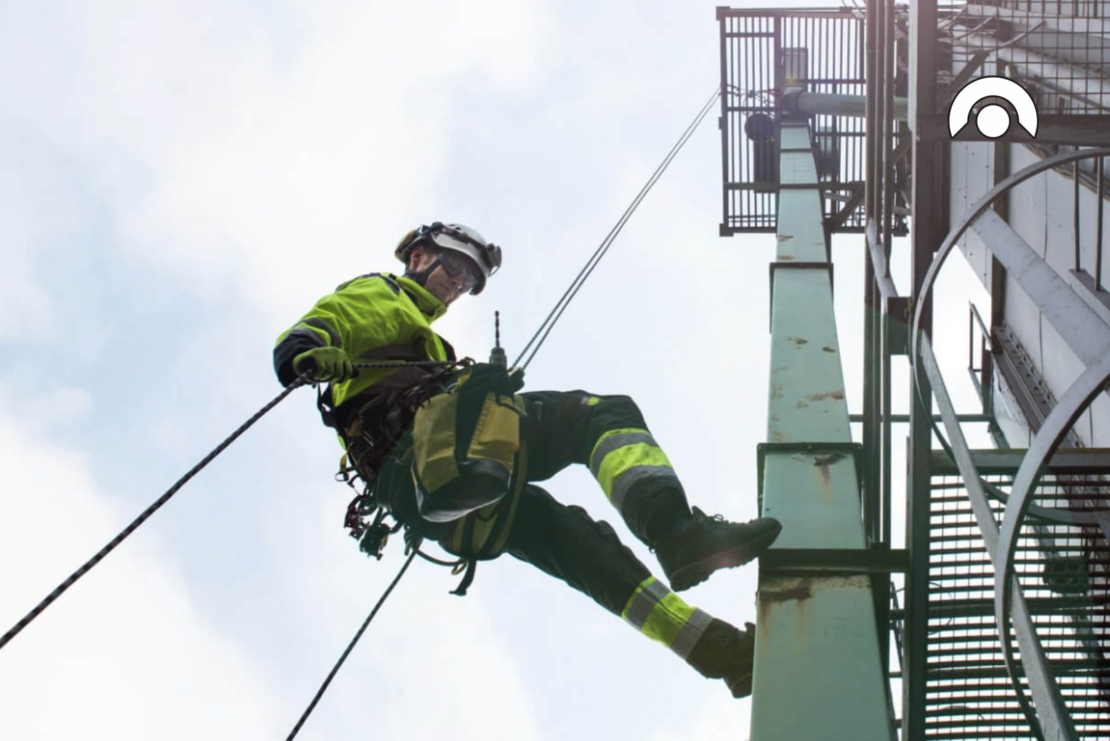
In 2019 there were 196,202 accidents at work, 104 of which resulted in death. These accidents have a huge impact, both humanly, financially and economically.
Of this number of accidents and deaths at work, a large proportion is related to accidents at height, which usually occur in the construction industry.
Among the main causes are scaffolding or platforms without safety guards, the absence of a correctly fitted safety harness, fragile roofs and ladders that are not properly supported, positioned and secured.
Work at height is considered to be all work carried out above a 2-meter difference in level from the base (floor or protected platform).
Scaffolding
Scaffolding is a temporary platform structure made of planks, which can be fixed or movable, and which serves as an auxiliary tool for carrying out construction work. It is considered a temporary collective construction and protection.
Scaffolding must be installed by properly trained and competent personnel, and its use is compulsory on construction sites if workers are more than 4 m high. Scaffolding over 8 m high requires a person responsible for its calculation, stability, execution and subsequent maintenance.
When erecting and dismantling scaffolding, workers must wear the necessary personal protective equipment, namely a hard hat, a system for tying them to the workstation and a fall arrest system (when there is a risk of falling); mechanical protective gloves and mechanical protective boots.
The area where the scaffolding is to be set up must be protected by means of a beacon or a fence. It should also be marked with a danger warning: falling objects, in order to ensure safety in the workplace.
Whenever scaffolding is erected in places where pedestrians pass, properly lit and signposted passageways must be created.
Use of work platforms
The work platforms must be wide enough for the worker to move around and work freely, with the support beams fully filled in.
Access between work platforms on scaffolding must be via ladders mounted on independent structures.
Materials must not be thrown from work platforms. Loads and materials must be lifted and lowered with the aid of pulleys duly attached to a rigid structure.
Whenever collective protection equipment is not effective or it is not possible to assemble scaffolding, workers must wear personal protective equipment (harness + fall arrest system).
When working at height, you should always consider the need to wear the following PPE:

Tirreno TXR ABS helmet Textile harness with regulator for places subject to falling objects and shocks.

Oreka Irudek helmet, ideal for working at height.

JRG Retractable Device Steel Cable Sint. Box + Mosq. 7,5 M


AZ900 Anchor Point w/ 100Cm or positioning rope

Cofra Leather Nubuck Boot Perk Brown S3 SRC

Nylon Gloves Polyurethane Palm Black PU1400 Juba Nylon Palm Polyurethane Gloves Black PU1400 Juba
A Norsafe You can use cookies to remember your login details, collect statistics to optimize the website's functionality and to carry out marketing actions based on your interests.
Cookies Necessários Permitem personalizar as ofertas comerciais que lhe são apresentadas, direcionando-as para os seus interesses. Podem ser cookies próprios ou de terceiros. Alertamos que, mesmo não aceitando estes cookies, irá receber ofertas comerciais, mas sem corresponderem às suas preferências.
Cookies Funcionais Oferecem uma experiência mais personalizada e completa, permitem guardar preferências, mostrar-lhe conteúdos relevantes para o seu gosto e enviar-lhe os alertas que tenha solicitado.
Cookies Publicitários Permitem-lhe estar em contacto com a sua rede social, partilhar conteúdos, enviar e divulgar comentários.

